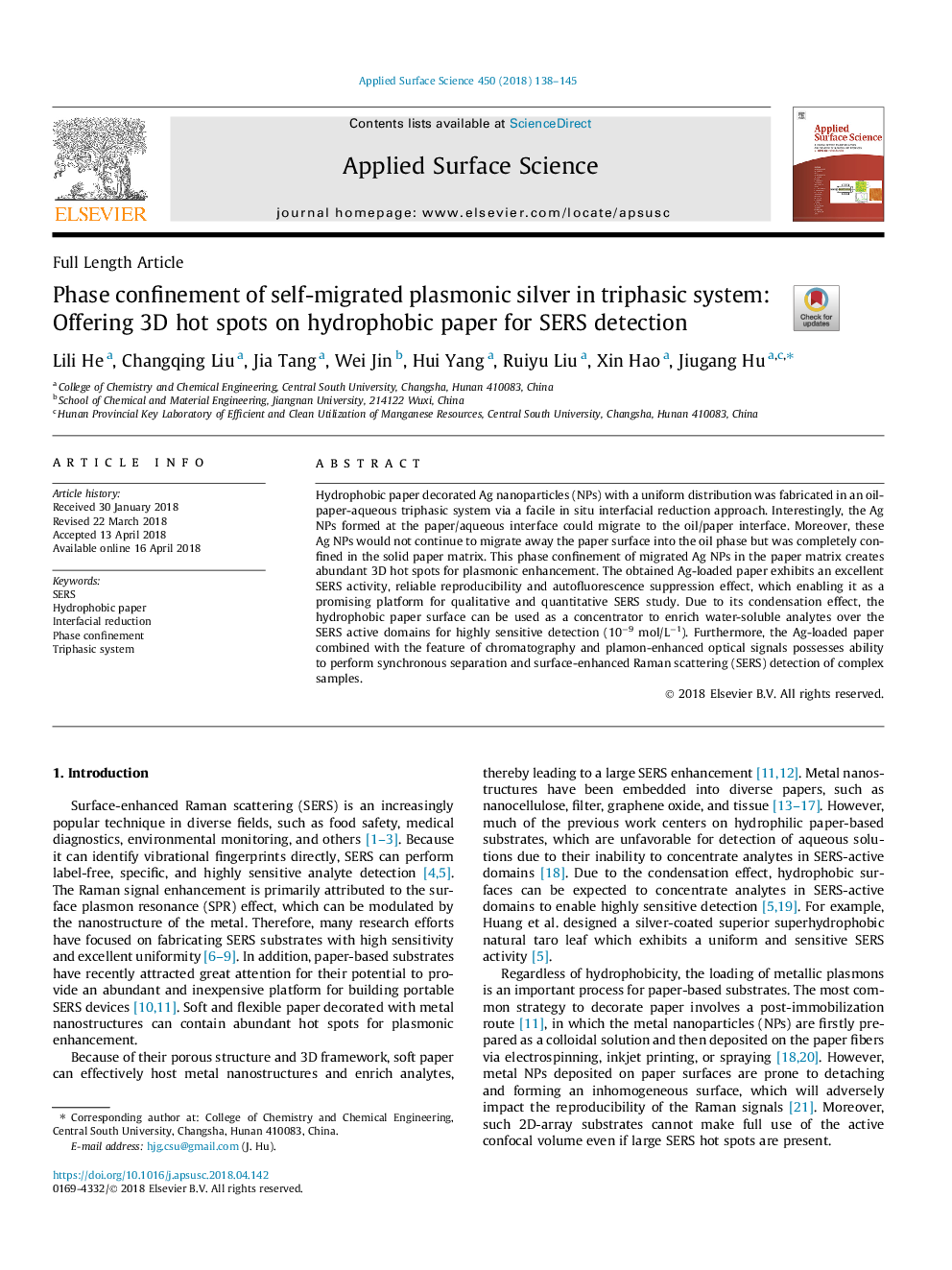| Article ID | Journal | Published Year | Pages | File Type |
|---|---|---|---|---|
| 7833524 | Applied Surface Science | 2018 | 8 Pages |
Abstract
Hydrophobic paper decorated Ag nanoparticles (NPs) with a uniform distribution was fabricated in an oil-paper-aqueous triphasic system via a facile in situ interfacial reduction approach. Interestingly, the Ag NPs formed at the paper/aqueous interface could migrate to the oil/paper interface. Moreover, these Ag NPs would not continue to migrate away the paper surface into the oil phase but was completely confined in the solid paper matrix. This phase confinement of migrated Ag NPs in the paper matrix creates abundant 3D hot spots for plasmonic enhancement. The obtained Ag-loaded paper exhibits an excellent SERS activity, reliable reproducibility and autofluorescence suppression effect, which enabling it as a promising platform for qualitative and quantitative SERS study. Due to its condensation effect, the hydrophobic paper surface can be used as a concentrator to enrich water-soluble analytes over the SERS active domains for highly sensitive detection (10â9 mol/Lâ1). Furthermore, the Ag-loaded paper combined with the feature of chromatography and plamon-enhanced optical signals possesses ability to perform synchronous separation and surface-enhanced Raman scattering (SERS) detection of complex samples.
Keywords
Related Topics
Physical Sciences and Engineering
Chemistry
Physical and Theoretical Chemistry
Authors
Lili He, Changqing Liu, Jia Tang, Wei Jin, Hui Yang, Ruiyu Liu, Xin Hao, Jiugang Hu,
